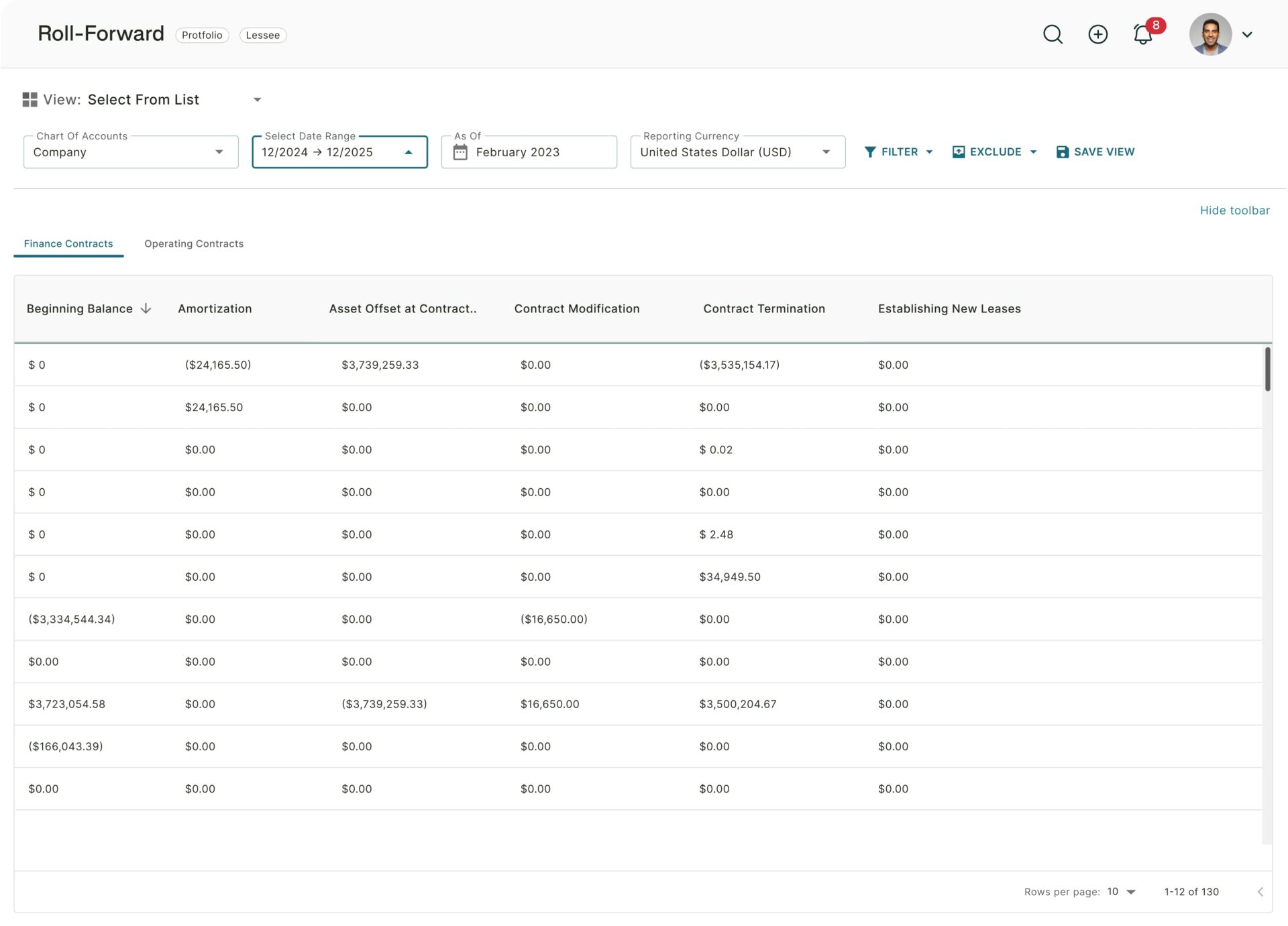Lessee? Lessor? Both? Implementing updated lease accounting standards such as ASC 842, IFRS 16 and GASB 87 can be confusing, especially when it comes to the differences between the requirements for a lessor vs a lessee.
With almost every aspect of a company’s operations potentially affecting lease accounting – from office rentals to equipment financing – understanding the key requirements from both a lessor and lessee perspective is critical in ensuring ongoing compliance and avoiding any surprises come audit time.
We’ll start with a primer on lessees and lessors, and then look a bit deeper at the relevant accounting treatment for each.
What is a Lessee?
A lessee is an entity that obtains the right to use an asset for a specific period of time, in exchange for payment. This arrangement is typically formalized through a lease agreement.
For example, if a company needs a new delivery vehicle, it can enter into a lease agreement with a vehicle dealership. Under this lease, the company obtains the right to use the vehicle for a specified period, say three years, in exchange for regular monthly payments. This arrangement allows the business to use the vehicle for its delivery needs without bearing the full cost of purchasing it.
The company, as a lessee, recognizes a right-of-use asset and a corresponding lease liability on its balance sheet, reflecting its obligation to make lease payments and its right to use the vehicle for the lease term.
What is a Lessor?
A lessor, on the other hand, is the party that owns the asset and grants the lessee the right to use it for a specified term in return for payment. Under lease accounting standards like ASC 842, IFRS 16, and GASB 87, lessors must classify leases as either finance leases or operating leases.
In a finance lease, the lessor recognizes a lease receivable and a residual asset, reflecting the rights to receive lease payments and the residual value of the leased asset, respectively.
For operating leases, the lessor continues to recognize the leased asset on their balance sheet and records rental income over the lease term, reflecting the ongoing ownership of the asset.
For example, if a company owns a commercial building, and wishes to lease it out, it becomes a lessor. It provides other businesses the right to use office space for their operations in exchange for a lease payment, typically on a monthly or annual basis. Depending on the terms of the lease and the applicable accounting standards, the real estate company will account for these leases as either operating or finance leases.
As a lessor, the company must recognize rental income and maintain the leased asset (i.e. the office space) on its balance sheet, reflecting its continued ownership and expectation of future economic benefits from the property.
Background for Lessors & Lessees within updated accounting standards
ASC 842, IFRS 16, and GASB 87 were introduced with a number of goals in mind. Among these goals was providing useful information to the users of financial statements. Part of the background to this was a number of financial scandals that had been uncovered where off-balance sheet financing, often involving leases, was used – and these standards sought to remove both lessors’ and lessees’ ability to use such opaque accounting practices.
The setters of these standards thus made a number of important changes; most notably by ensuring that operating leases are no longer expensed through the income statement, but appear on the balance sheet. They also ensured that much more robust disclosures are required by both lessees and lessors to enable all users of financial statements to gain a clearer understanding of a company’s financial situation, and make it more difficult for companies to “hide” payments and liabilities.
Next, we’ll take a more in-depth look at the accounting treatment for both lessors and lessees as required by these standards.
Lessor accounting under updated accounting standards
First, we turn our attention to lessors. Of the two categories (lessors and lessees), it’s lessors who have seen fewer changes under these new standards. While accounting treatment varies slightly depending on whether ASC 842, IFRS 16, or GASB 87 is applicable, they generally follow these principles:
Recognition
Lessors must classify each lease as either an operating lease or a finance lease. This classification is based on whether the lease effectively transfers substantially all the risks and rewards incidental to ownership of the underlying asset. If such a transfer occurs, the lease is classified as a finance lease; if not, it is an operating lease.
Initial Measurement
For finance leases, the lessor recognizes a lease receivable at the lease commencement date. This receivable is equal to the net investment in the lease, which typically includes the present value of lease payments due and any unguaranteed residual value. For operating leases, the lessor continues to recognize the leased asset in its balance sheet and measures it according to the relevant property, plant, and equipment standards.
Subsequent Measurement
In finance leases, the lessor splits the lease income into interest revenue and reduction of the outstanding receivable, recognizing interest income over the lease term. The interest rate used is typically the rate implicit in the lease. For operating leases, the lessor recognizes lease income on a straight-line basis over the lease term, while the underlying asset is depreciated as per standard accounting practices.
Disclosure
Both ASC 842 and IFRS 16 require lessors to provide extensive disclosures in their financial statements. These include qualitative and quantitative information about leasing activities, such as a general description of the leases, significant judgments made in classifying leases, and information about lease income. The goal is to give users of financial statements a complete picture of the lessor’s leasing activities, including exposure to credit and asset risks.
Next, we turn our attention to accounting from a lessee’s perspective.
Lessee accounting under updated accounting standards
As we discussed, lease accounting for lessees underwent a more comprehensive change in terms of the updated accounting standards like ASC 842, IFRS 16, and GASB 87. This went right to the heart of what a lease is, and for many companies it means re-evaluating contracts to ensure that a lease is not present. At a high level, accounting for lessees involves the following:
Recognition
Lessees are required to recognize nearly all leases (with some exceptions, like short-term leases) on the balance sheet. This represents a significant shift from previous guidelines, where only capital leases were recognized. The lessee must identify the lease term and lease payments, considering options to extend or terminate the lease and payments for such options.
Initial Measurement
At the commencement of the lease, the lessee recognizes a right-of-use asset and a lease liability. The right-of-use asset represents the lessee’s right to use the leased asset for the lease term, and the lease liability represents the obligation to make lease payments. The initial measurement of the lease liability is typically the present value of lease payments, discounted at the lessee’s incremental borrowing rate or the rate implicit in the lease if readily determinable.
Subsequent Measurement
The lease liability is subsequently measured by increasing the carrying amount to reflect interest on the lease liability and reducing it by the lease payments made. The right-of-use asset is typically depreciated over the lease term on a straight-line basis, unless another systematic basis is more representative of the pattern in which the lessee expects to consume the asset’s future economic benefits.
Disclosure
Lessees must provide extensive disclosures in their financial statements under these standards. These disclosures include information about the nature of the leasing activities, a maturity analysis of lease liabilities, and the expense recognized in the period related to lease liabilities. This increased transparency aims to provide a clearer picture of the lessee’s financial commitments and the impact of leasing activities on their financial position and cash flows.
Lessee vs lessor accounting solutions: Technology & AI pave the way
While the introduction of a new Topic or Standard is bound to cause much discussion and no small amount of confusion, the good news is that many companies have already shown that complying with these regulations is easily within reach, and doesn’t have to be painful.
The secret? Technology.
The latest technologies such as AI and machine learning can eliminate manual processes, cut through confusion, and enable accounting teams to rely on them for the heavy lifting while they focus on high-impact activities.
As a leader in this field, Trullion’s AI-powered lease accounting platform enables companies to automate workflows, making initial lease accounting, modifications and compliance a breeze, even as standards evolve. With Trullion, you can:
- Upload, manage and update contracts automatically from PDF or Excel
- Ingest and extract key data with one click
- Automatically log all relevant audit data for a robust audit trail
- Instantly calculate IBR
- Seamlessly detect and deal with modifications
- Generate 100% auditable journal entries and disclosure reports
Interested in learning more? Get in touch with a Trullion team member today: https://trullion.com/contact-us/





